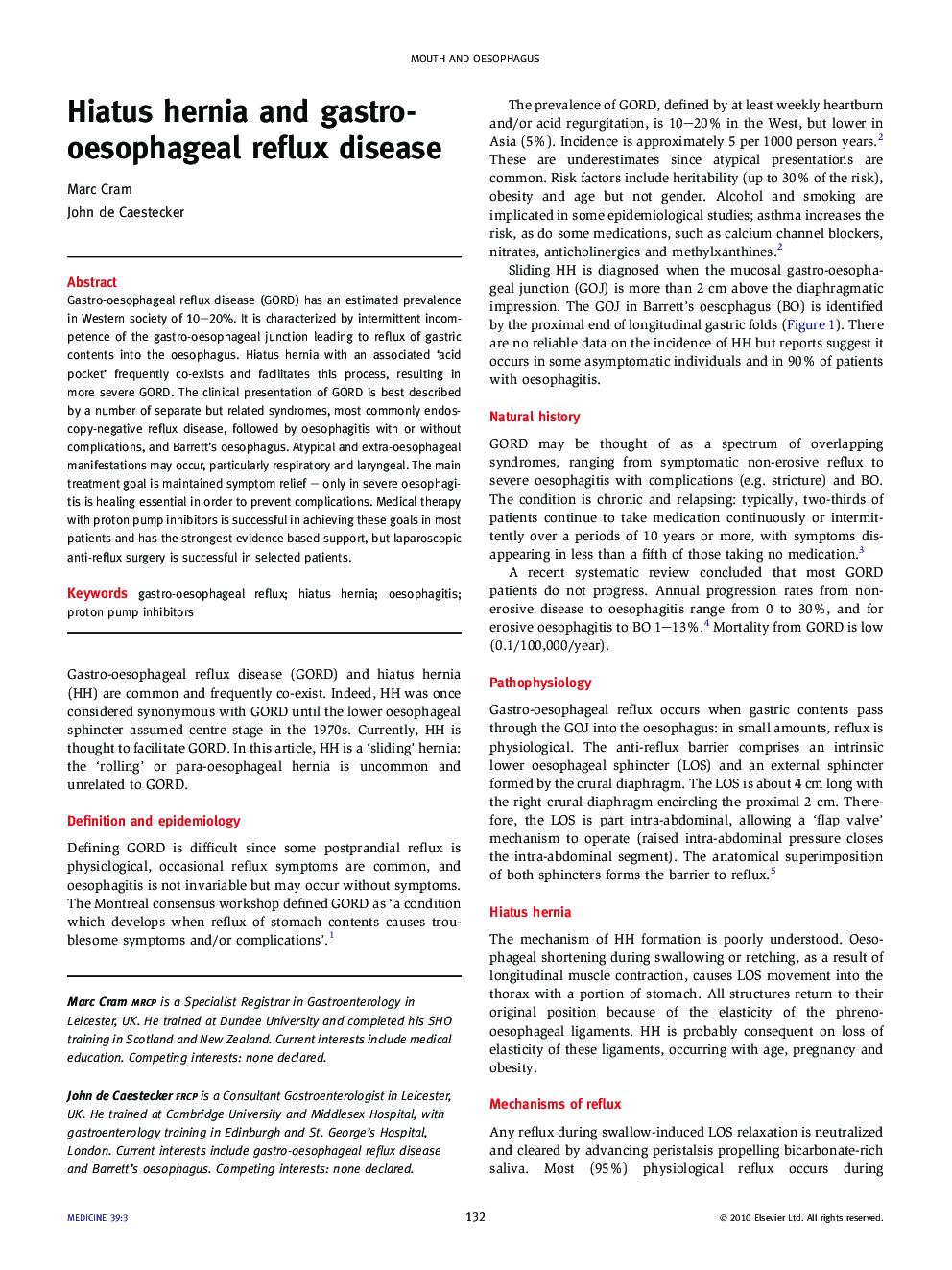| Article ID | Journal | Published Year | Pages | File Type |
|---|---|---|---|---|
| 3804202 | Medicine | 2011 | 5 Pages |
Gastro-oesophageal reflux disease (GORD) has an estimated prevalence in Western society of 10–20%. It is characterized by intermittent incompetence of the gastro-oesophageal junction leading to reflux of gastric contents into the oesophagus. Hiatus hernia with an associated ‘acid pocket’ frequently co-exists and facilitates this process, resulting in more severe GORD. The clinical presentation of GORD is best described by a number of separate but related syndromes, most commonly endoscopy-negative reflux disease, followed by oesophagitis with or without complications, and Barrett’s oesophagus. Atypical and extra-oesophageal manifestations may occur, particularly respiratory and laryngeal. The main treatment goal is maintained symptom relief – only in severe oesophagitis is healing essential in order to prevent complications. Medical therapy with proton pump inhibitors is successful in achieving these goals in most patients and has the strongest evidence-based support, but laparoscopic anti-reflux surgery is successful in selected patients.
